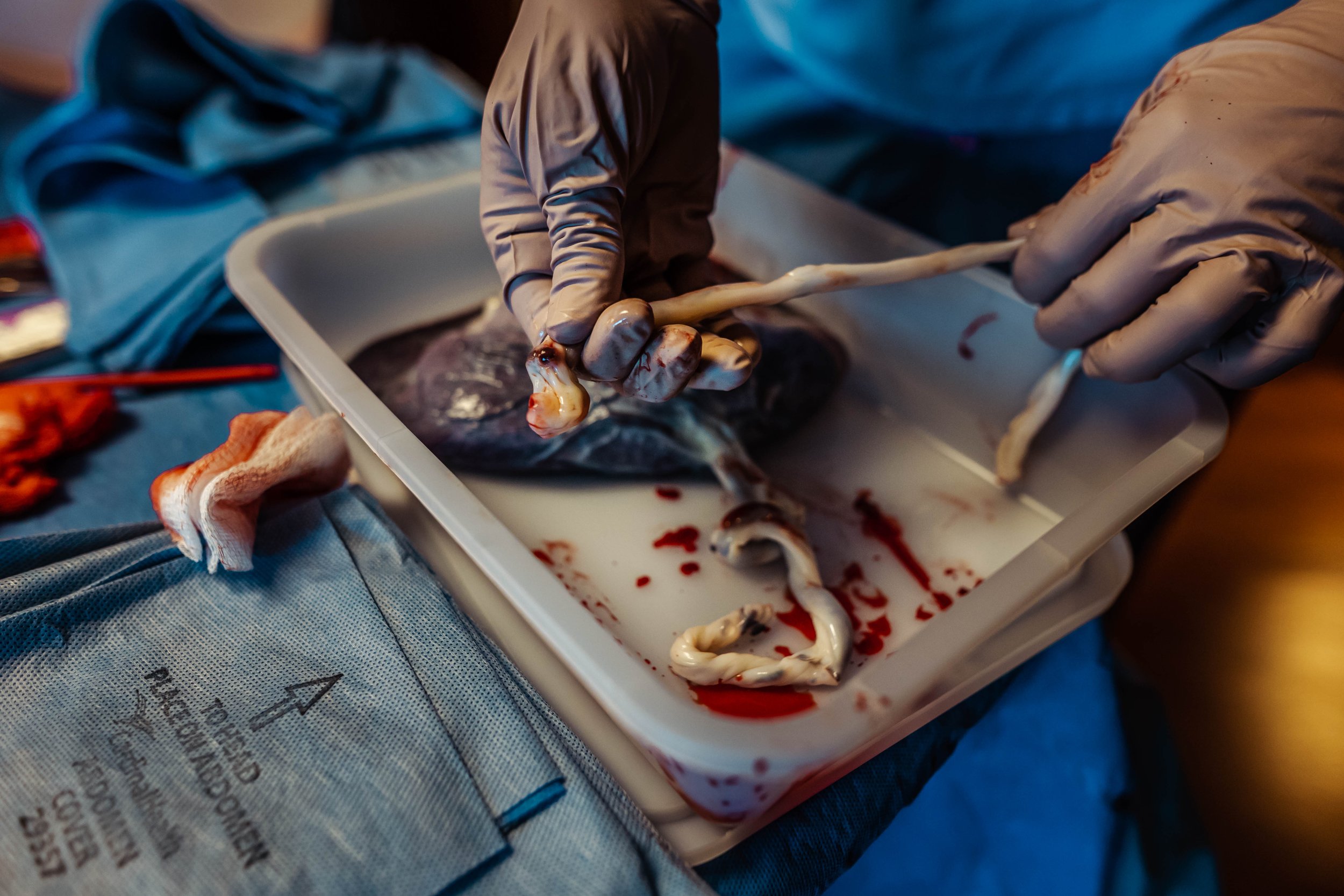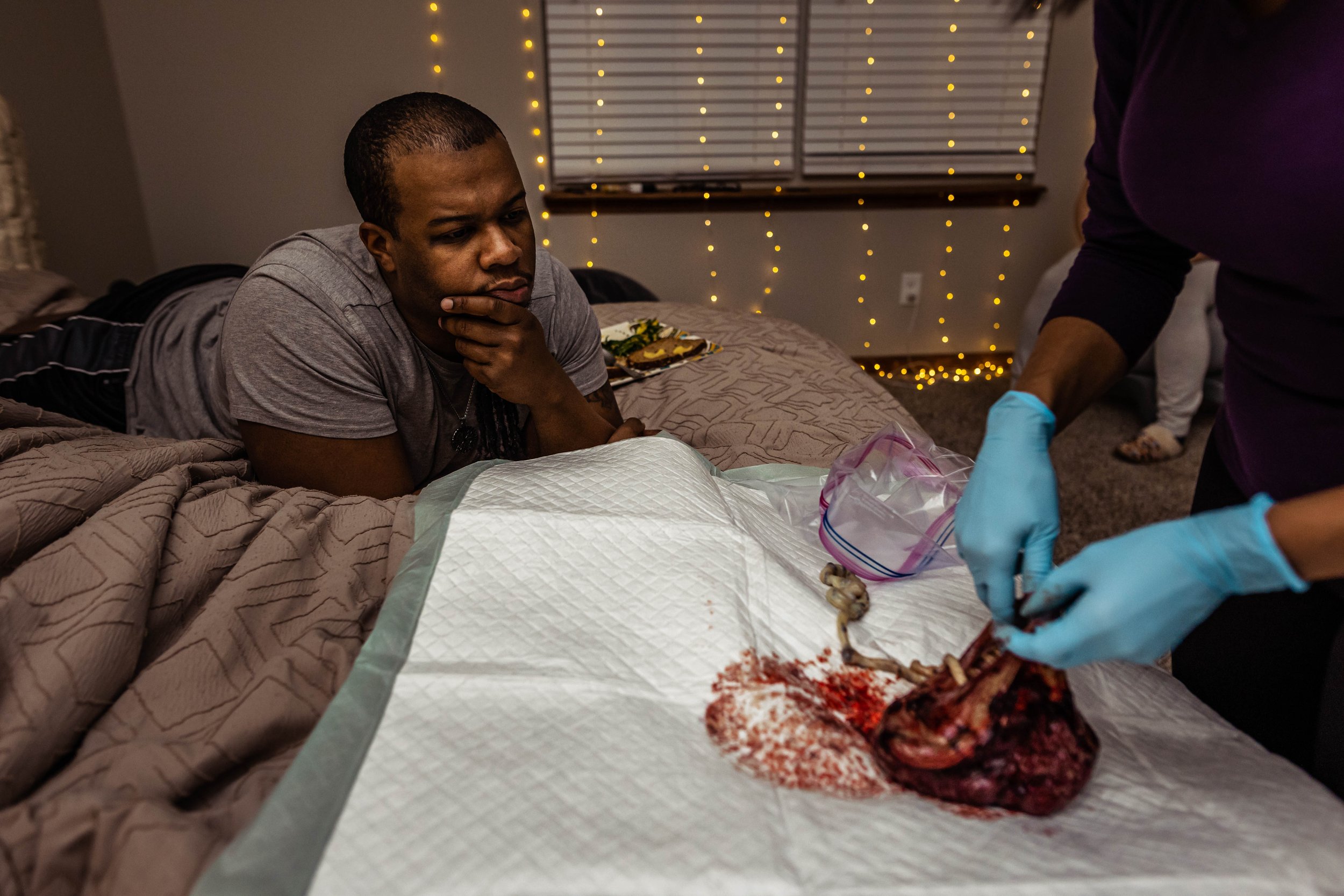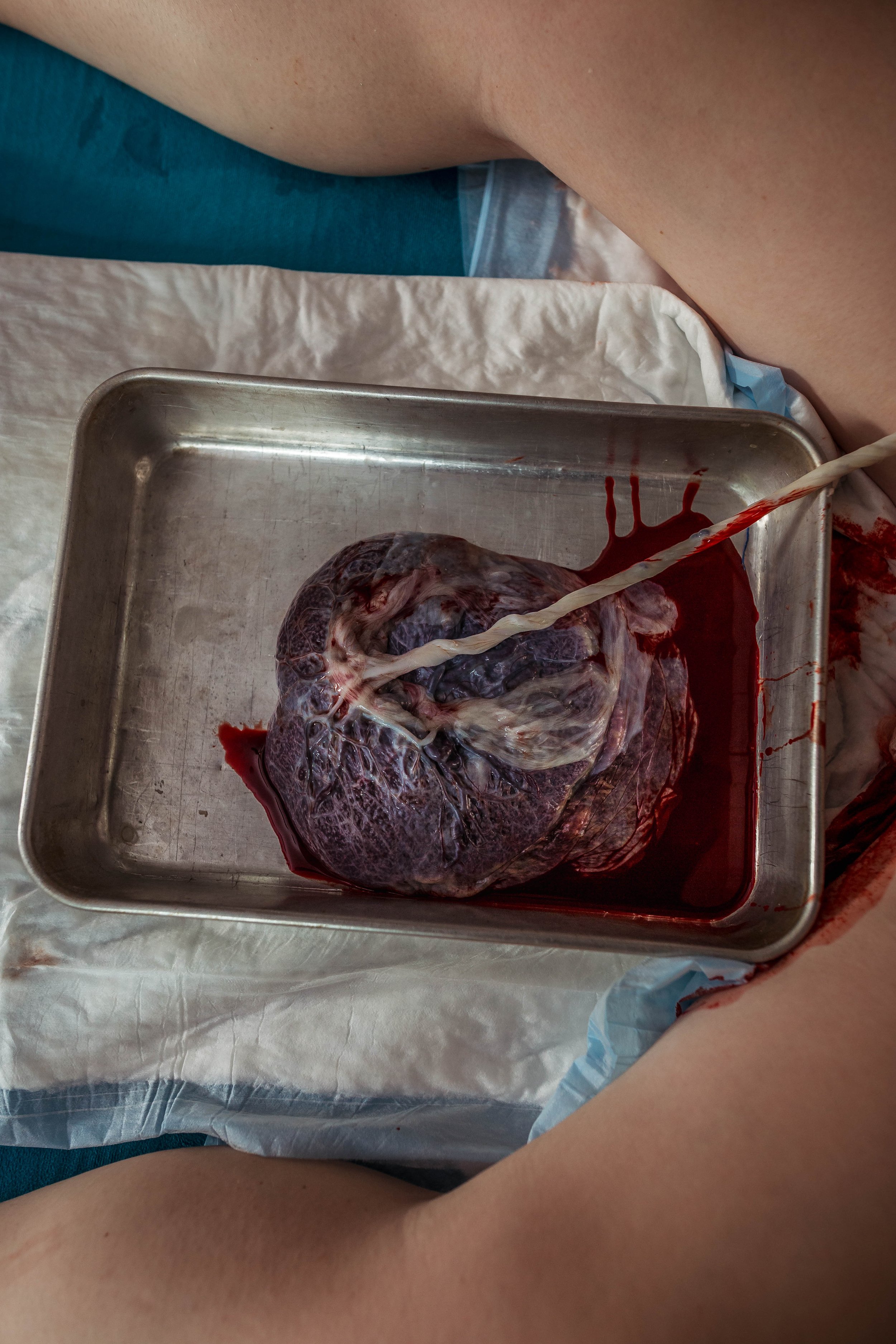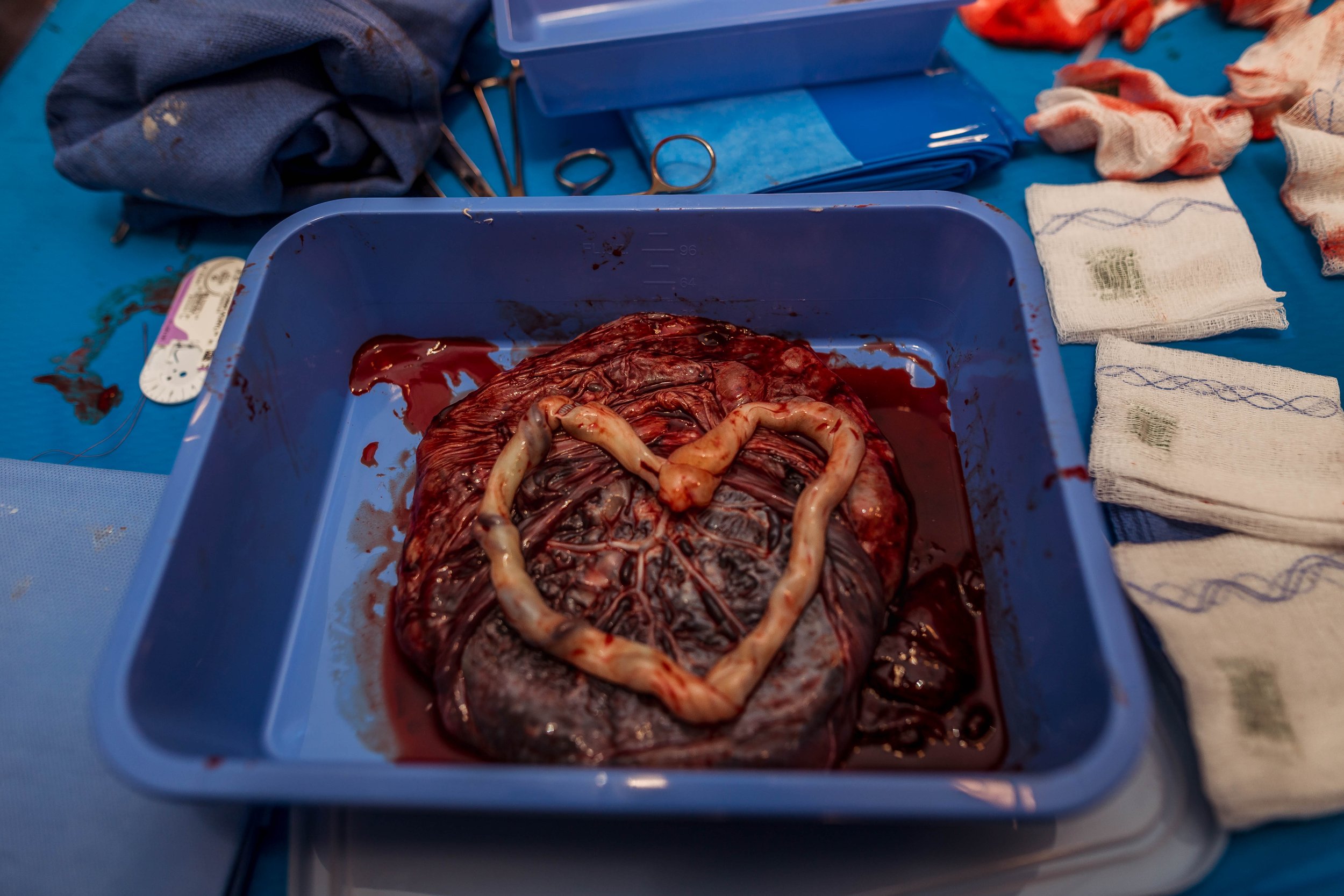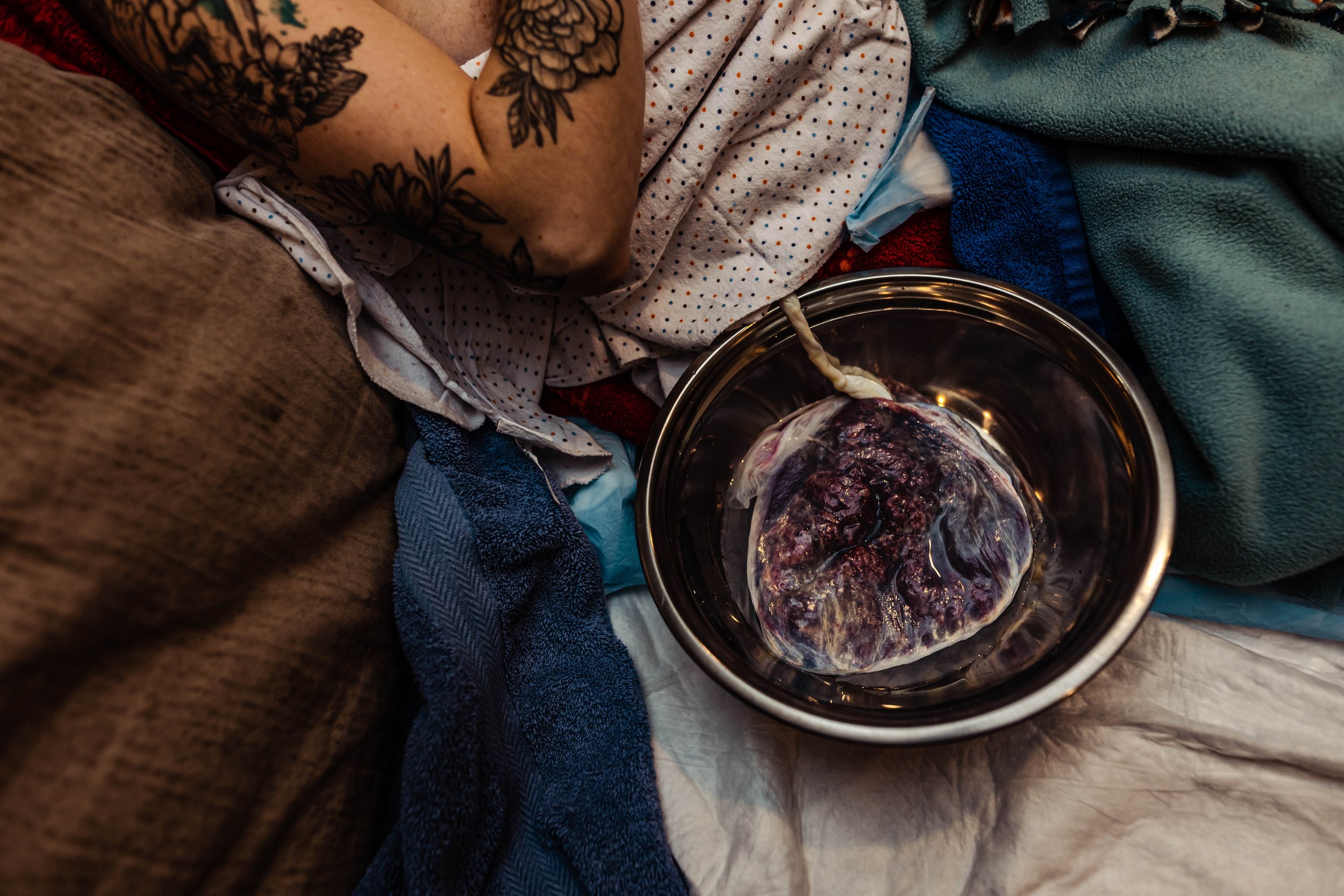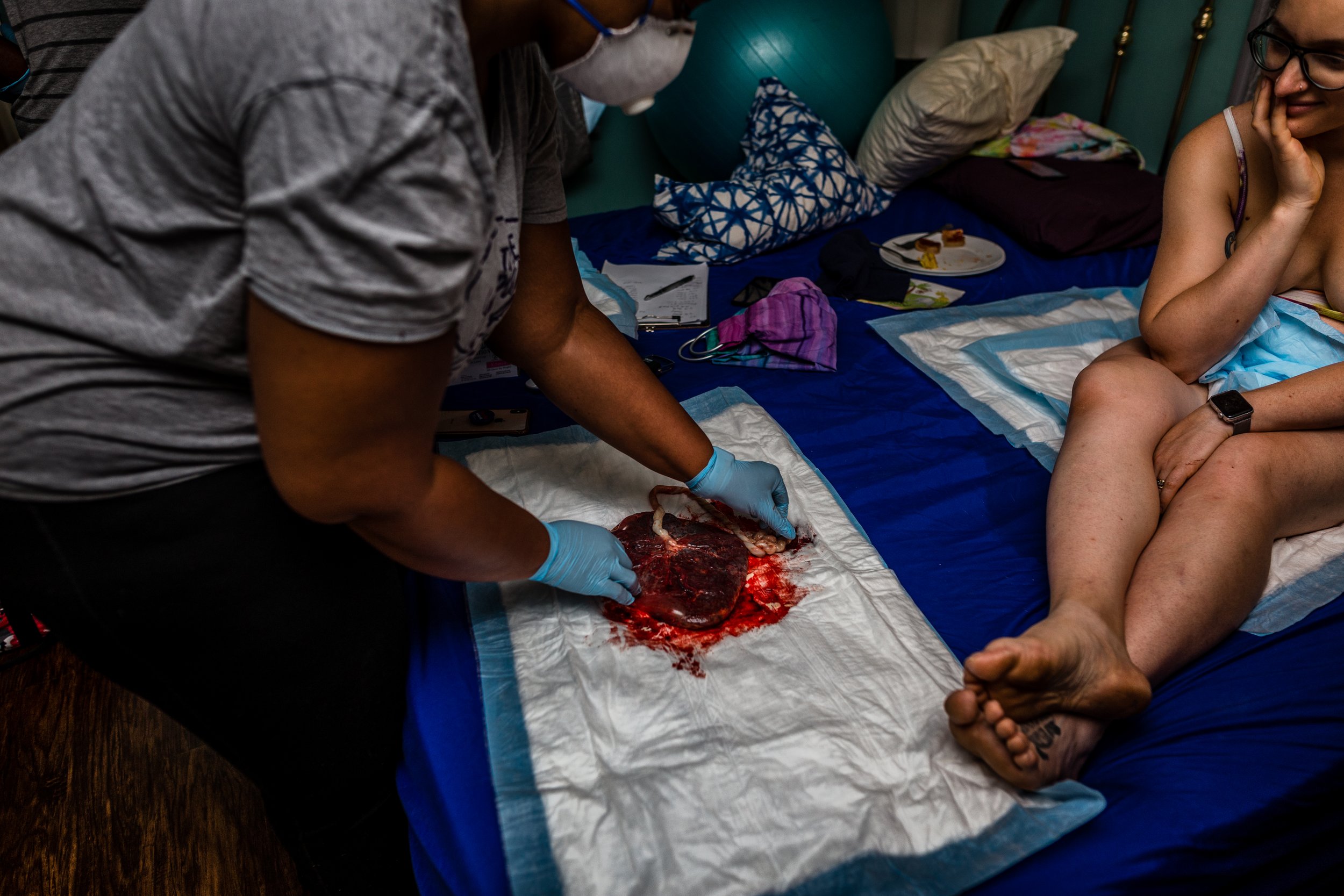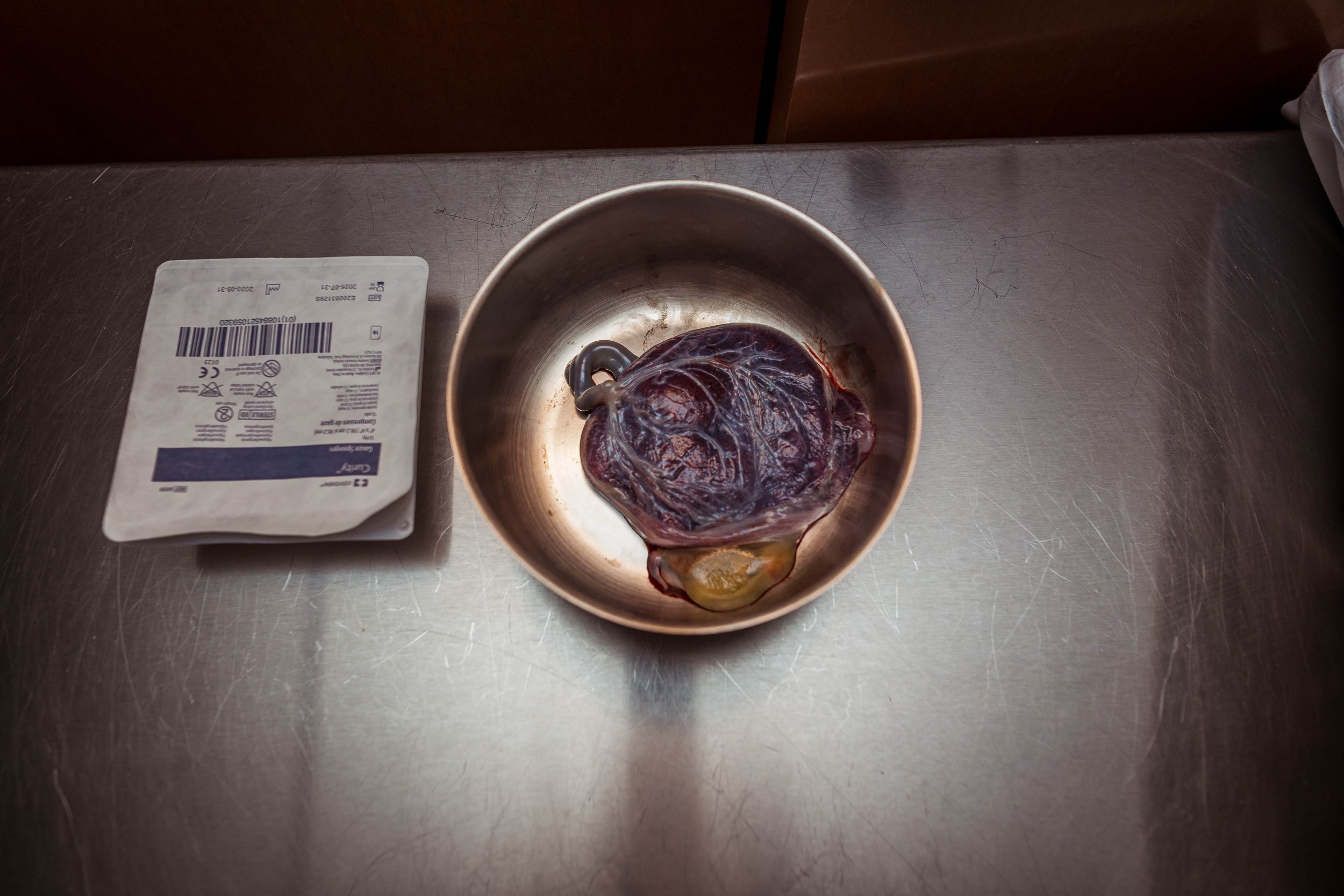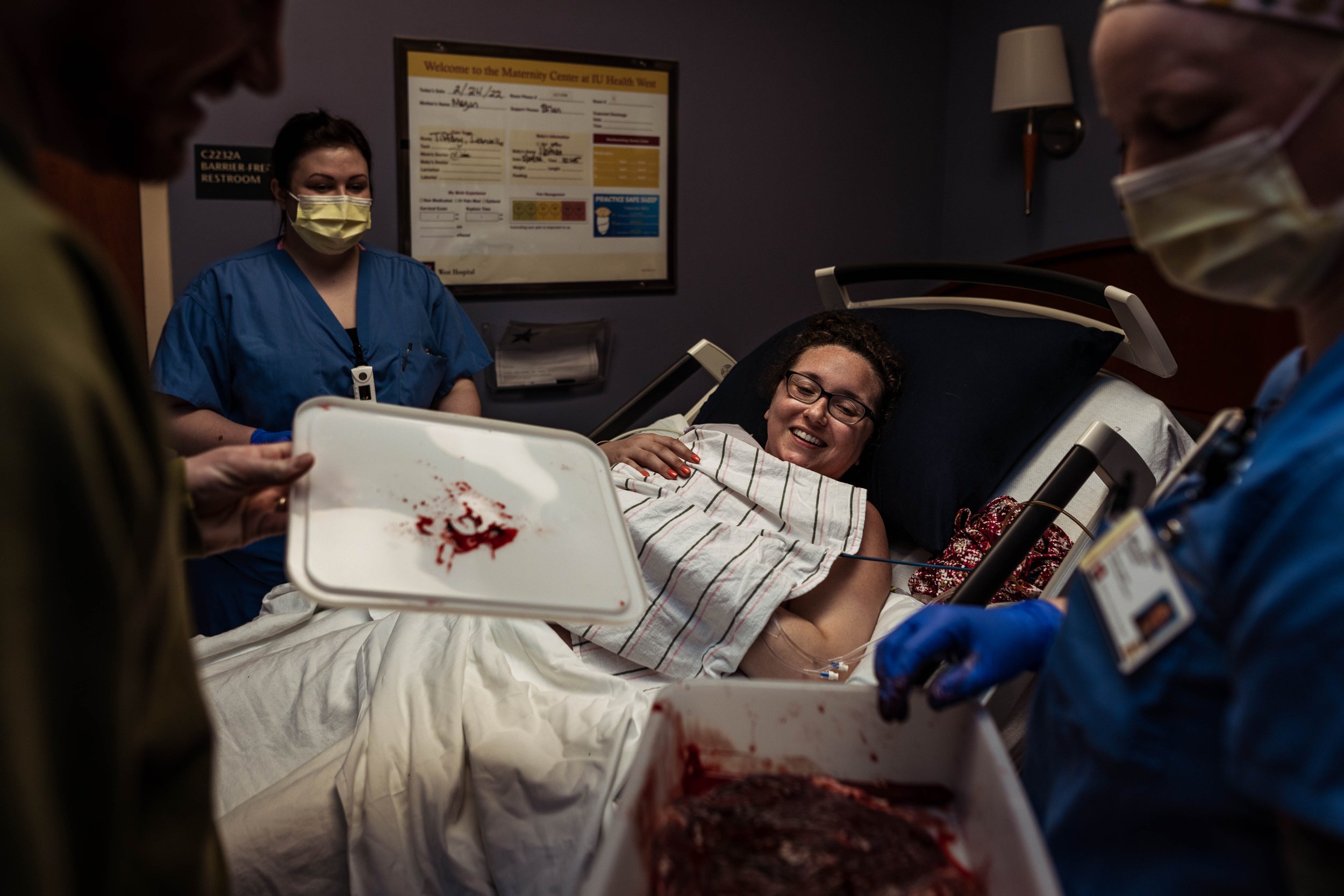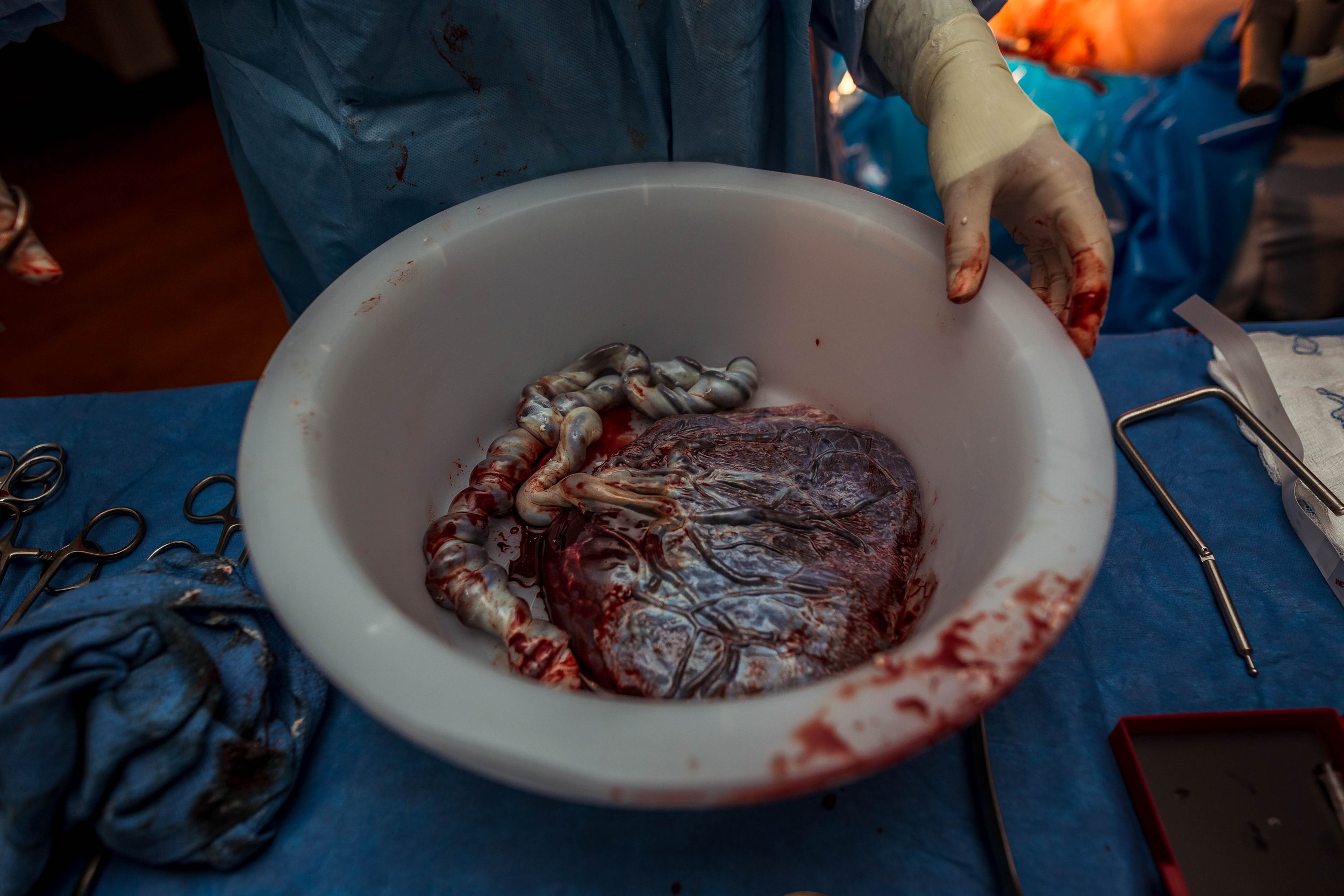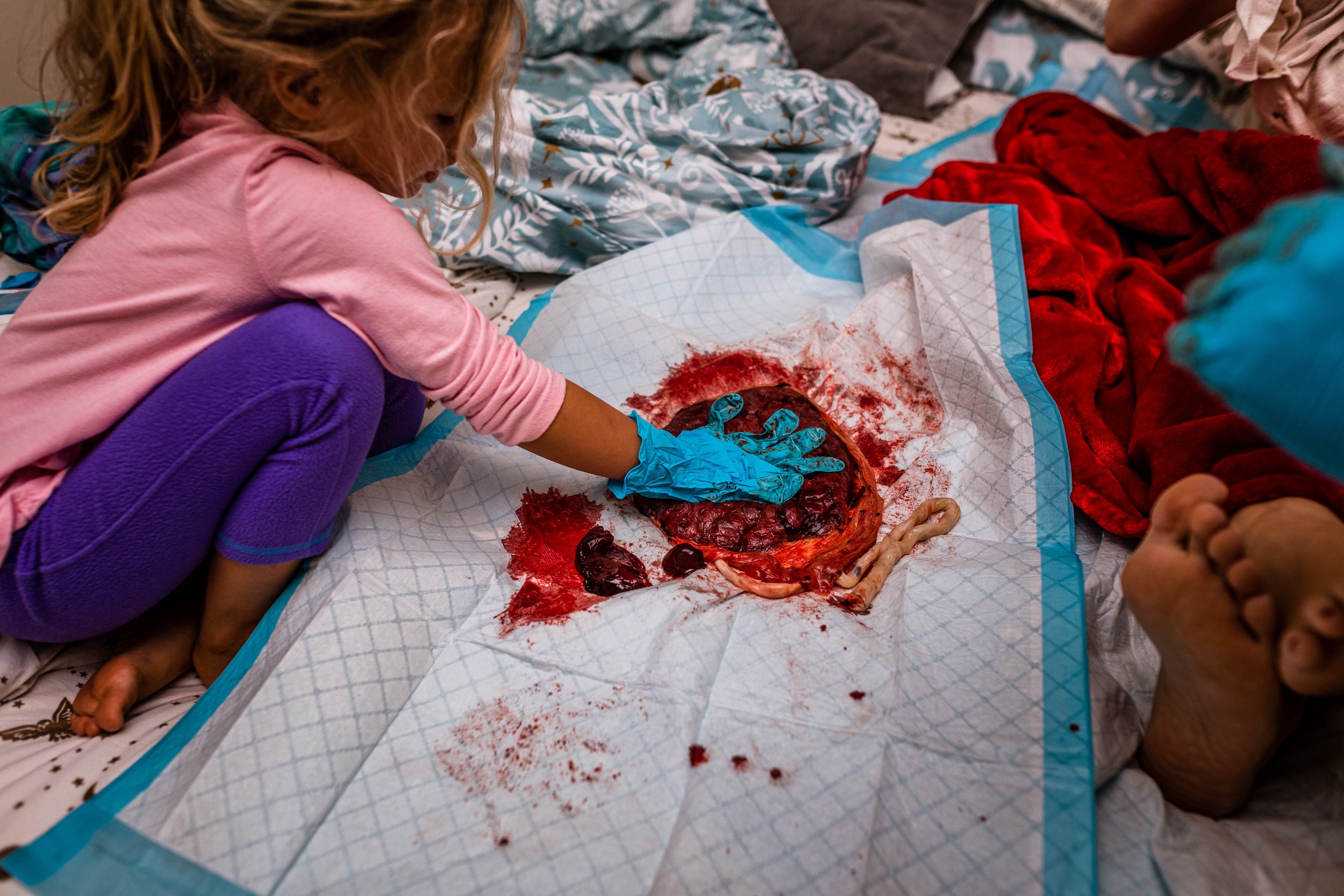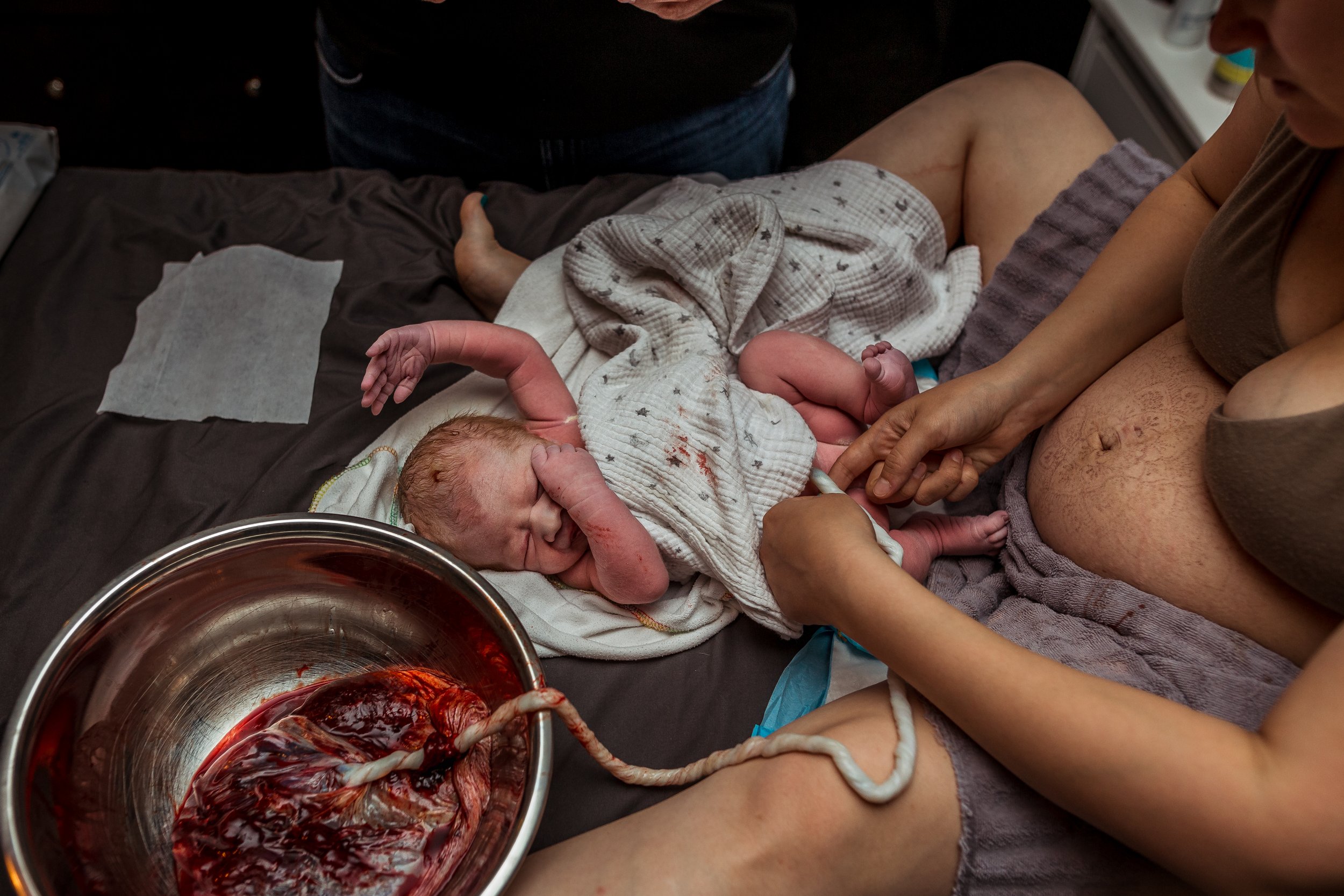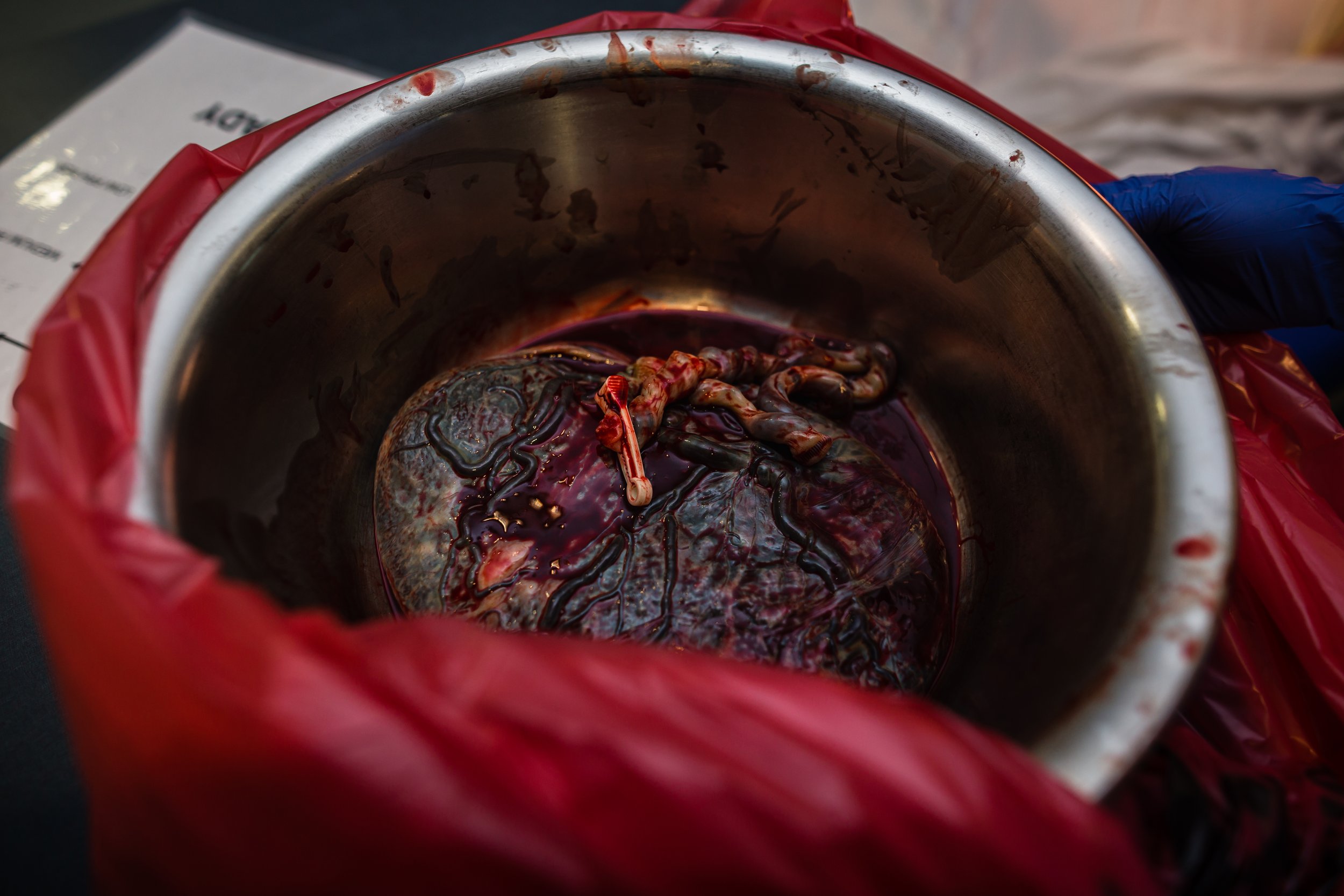A Beautiful Sustaining Organ: A Placenta Photo Series — Indianapolis, Indiana Birth Photographer
The Placenta: A Marvel
There are many marvels detailed in birth, and as a birth photographer, I get to lay witness to most all of them. Even though each birthing experience is unique, some details in birth have a similar rhythm. One of those is the birth of the placenta and the wonder of its function. I love capturing the placenta and its cord, which connects it to the baby, after birth. There is such beauty in the details of the “baby’s side”, and then flipping it over and seeing where it was attached to the uterus on the “maternal side”.
The inner workings of a placenta
The placenta is formed during pregnancy and attaches itself to the wall of the uterus. It is made up of two parts: the maternal side, which is attached to the uterine wall, and the fetal side, which is attached to the umbilical cord. The placenta acts as a barrier between the mother and the fetus, allowing nutrients and oxygen to pass from the mother’s bloodstream to the fetus while filtering out waste products. The placenta is also responsible for the production of hormones that regulate the pregnancy and prepare the body for childbirth. These hormones include estrogen, which helps to thicken the uterine lining, and progesterone, which helps maintain the pregnancy and prevent premature labor.
The placenta is truly a remarkable organ that plays a critical role in the development of a fetus. Its magical inner workings supply the baby with all the nutrients and oxygen it needs to thrive, while also protecting it from harm. It truly is a “tree of life”.
placentas in culture
In some cultures, the placenta is considered to be sacred and is treated with great reverence. Some believe that it contains the life force of the unborn child and should be buried or otherwise disposed of in a respectful manner.
Placental consumption is also another way to respectfully dispose of your placenta. Not only is encapsulating your placenta allowing it to come full circle, recycling your placenta into capsules or tinctures to consume can offer hormones and nutrients to your postpartum body that may drastically drop after birth. To learn more about placenta encapsulation, my dear friend and doula Kristina Garcia shares more in depth information here.
An emotional revelation
I was thwarted into sharing this placenta series one day when catching up on the latest episodes of Call The Midwife on Netflix. It is a show based in the late 50s-60s based near London about midwifery during this time. Sister Monica Joan, a character who is a Catholic nun and midwife in the series, had lost her faith in God, but found it again upon inspecting a placenta she’d just helped a student deliver. I’m not a super religious person myself, but the script of her words really made me feel all the feels upon seeing this episode for the first time: “I have examined placenta in all kinds of light, gas jets, candle flames, torch beams as bombs fell. I never cease to marvel at its beauty, when exposed. This, the least visible of all the body’s organs, laid before us for our scrutiny. This was one of the thousand things that made midwifery a privilege.” .. “It grows with us, it fires us, it sustains the very beating of our blood! When I see this, with all its lines and traceries, I see the miracle of God Himself. I see His handiwork, and I see His love. I see where I began, what fed me, and what feeds me now. It is complete. And so, within His love, am I.” .. “I witnessed a new life beginning, and my darkness died.”
Birth work is inherently the same for me. I get to witness and feel such a range of emotions in this work and while it can be taxing at times, especially when loss occurs, it keeps me rooted in constant thankfulness. I am so grateful to each and every person that allows me to photograph their complex and marvelous organ. I am enamored by those who choose to allow me into their space to begin with.



